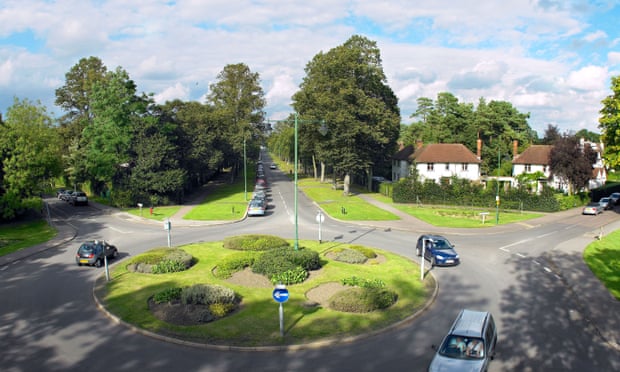Fourteen garden villages are to be built across England on sites including a former airfield and green belt land, ministers have said.
The villages, totalling 48,000 homes, will not be extensions of existing small towns or villages, but “distinct new places with their own community facilities”, the government said.
Sites from Cornwall to Cumbria have been identified in the first round of approved locations, making them eligible for a share of a £6m government technical and financial support fund. After completion, the villages may vary in size from 1,500 homes up to 10,000.
The housing minister, Gavin Barwell, said the development of the villages would be locally led by communities rather than central government. “New communities not only deliver homes, they also bring new jobs and facilities and a big boost to local economies,” he said.
The 600-acre former Deenethorpe airfield near Corby, Northamptonshire, is one of the sites that has been approved for a village. The plans include a village green, shops and community hall, as well as more than 1,000 homes.
Dunton Hills, a garden village set to be built near Brentwood, Essex, will have at least 2,500 homes, as well as new Gypsy and Traveller pitches.
West Carclaze in Cornwall is set to be an ecovillage with 1,500 new energy-efficient homes, space for self-build and custom-built housing, and a new primary school for more than 400 pupils.
Developers say it will have a solar farm and 350 hectares of green space in a new china clay heritage park incorporating the Sky Tip, a local landmark. Bike trails and pubs are also planned.
However, local councillors have raised concerns about the small percentage of affordable housing and change in character of the historical mining area.
Cllr Dick Cole, leader of the Cornish devolution party Mebyon Kernow, who said he had objected to proposals for an ecotown for a decade, said the garden village announcement was no more than window dressing for a controversial project.
“The government talks about it being a locally led development, but the reality is that this is only happening because it was a government top-down initiative,” he told the Guardian.
“They say it is a brownfield site, but many of the houses are on fields. It has been one of those projects that seems to have a momentum of its own, despite what local people say.”
North Cheshire garden village, which will sit on the eastern edge of Handforth, has development plans that include 2,000 homes, a nursery and a care home, as well as architect-designed “one-off” homes.
However, locals are worried that a new village of several thousand homes may put pressure on infrastructure such as the congested A34.
Other planned villages include Long Marston in Warwickshire, Spitalgate Heath in Lincolnshire, Bailrigg in Lancaster and the Infinity garden village in Derbyshire.
The final six are Oxfordshire Cotswold, Culm in Devon, Welborne in Hampshire, Halsnead in Merseyside, Longcross in Surrey and St Cuthberts near Carlisle.
The garden village initiative was announced by the then chancellor George Osborne last year. Conditions for building villages or market towns stated that the developments must be “a new discrete settlement and not an extension of an existing town or village”.
Shaun Spiers, the chief executive of the Campaign to Protect Rural England (CPRE), said it would carefully examine the proposals to see whether they were locally led and respected the green belt.
“Done well with genuine local consent, garden villages and towns can help tackle the housing crisis,” he said. “They can certainly be preferable to what is currently happening in too many parts of the country: poor quality developments plonked on the countryside, in the teeth of local opposition and in defiance of good planning principles.”
But areas that absorbed the new garden villages should have guarantees that they would be “protected from speculative planning applications for a long time to come”, he added.
The Department for Communities and Local Government said there had been high levels of interest in building more villages in the coming years and it would make an additional £1m available this year to further development other proposals.
Three new garden towns have also been announced near Aylesbury in Buckinghamshire, Taunton in Somerset and Harlow and Gilston in Hertfordshire, with £1.4m of funding to support the delivery of about 50,000 homes.
Local CPRE members strongly object to the Hertfordshire plans, under which the village of Gilston and neighbouring hamlet of Eastwick would disappear.
Kevin FitzGerald, the honorary director of CPRE Hertfordshire, said: “These plans herald the death knell of the rural character of whole swaths of Hertfordshire. Beautiful villages, supposedly protected by green belt [designation], look set to be swallowed up by the urban sprawl of neighbouring towns.
“Housing targets are putting immense pressure on our area and marginalising the basic purposes of the green belt, which the government has pledged to protect.”


